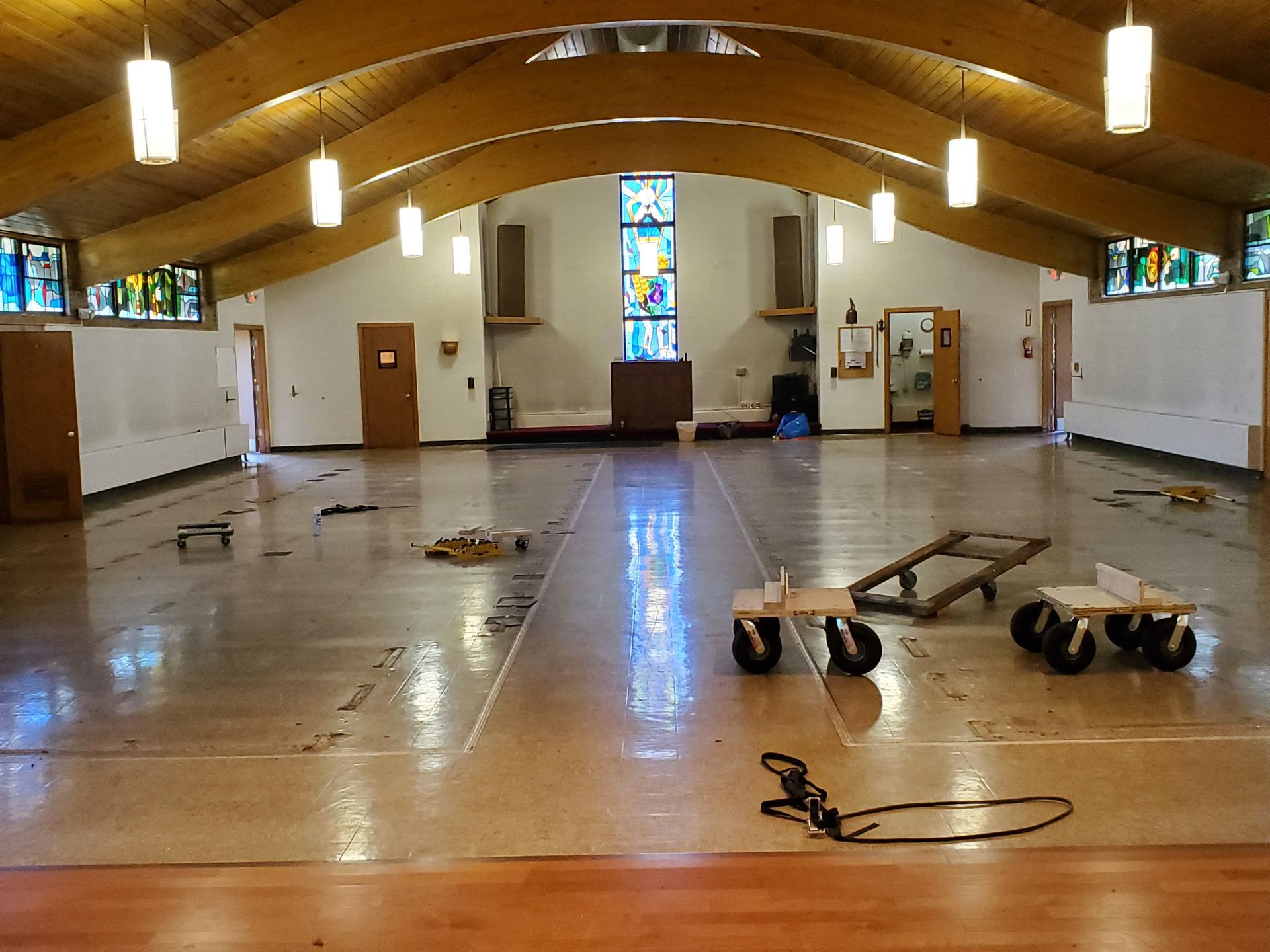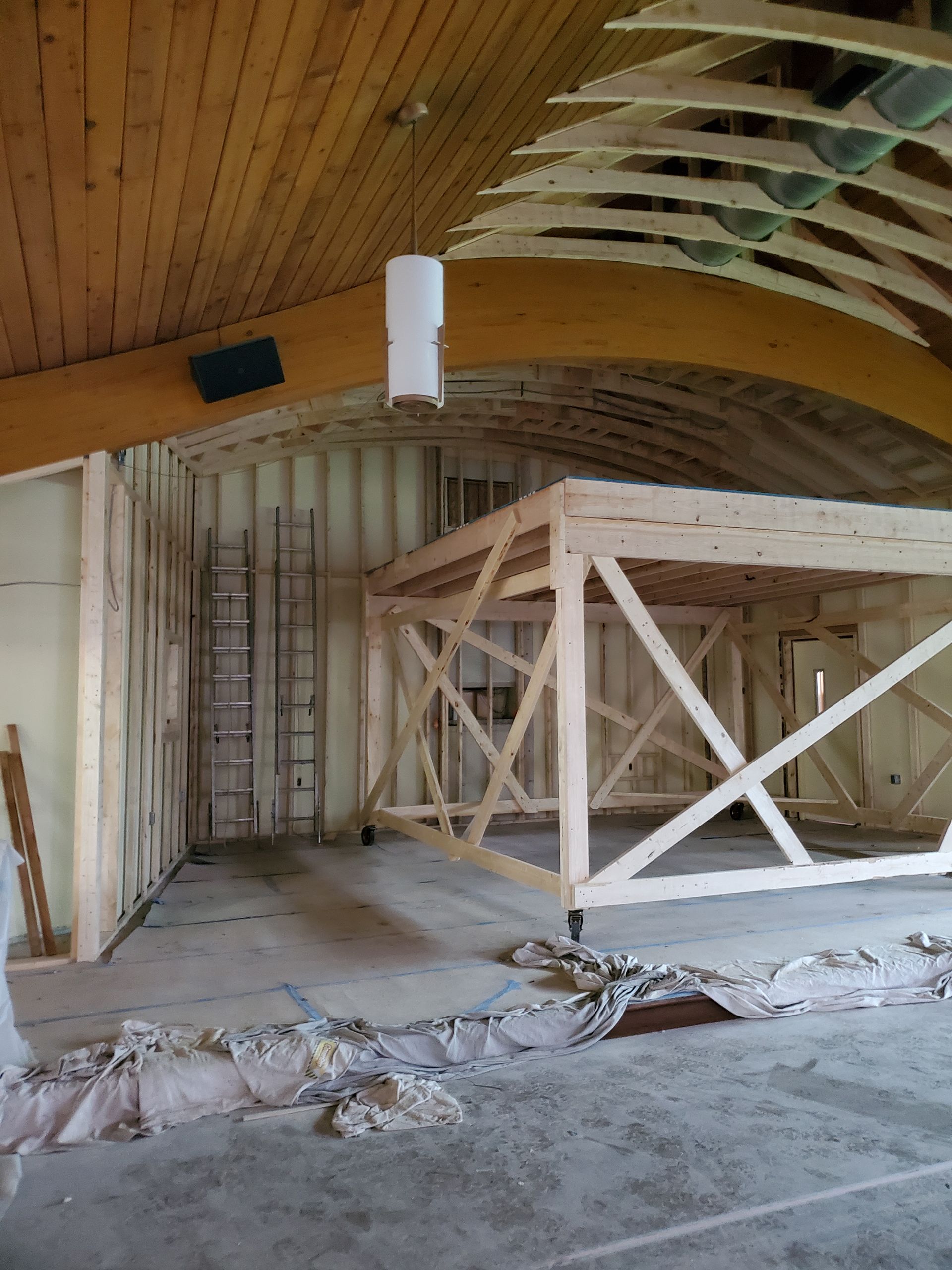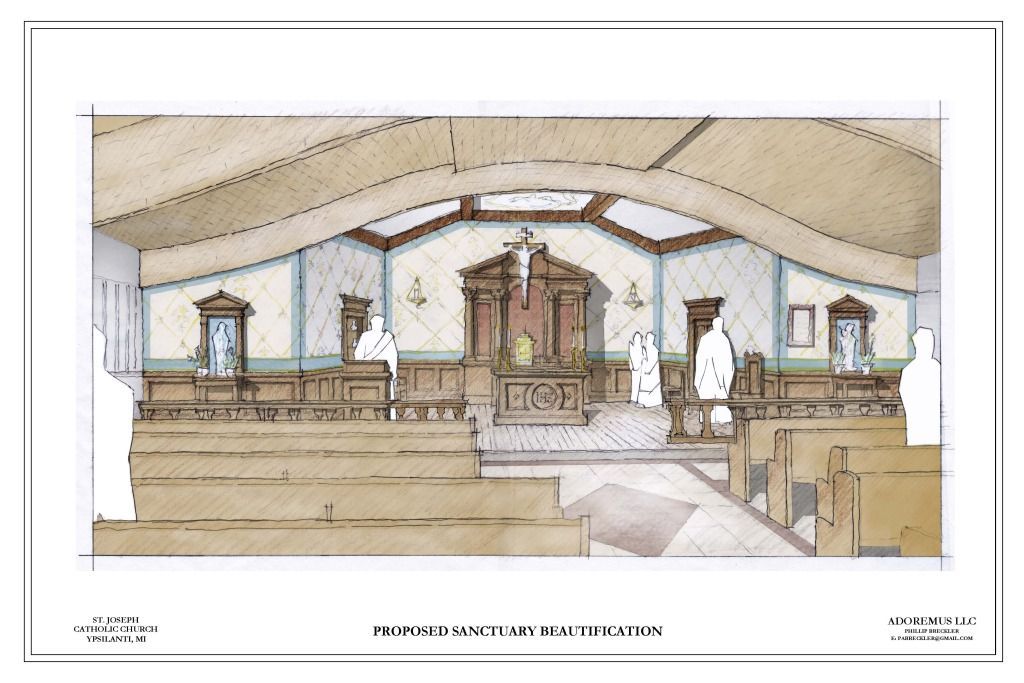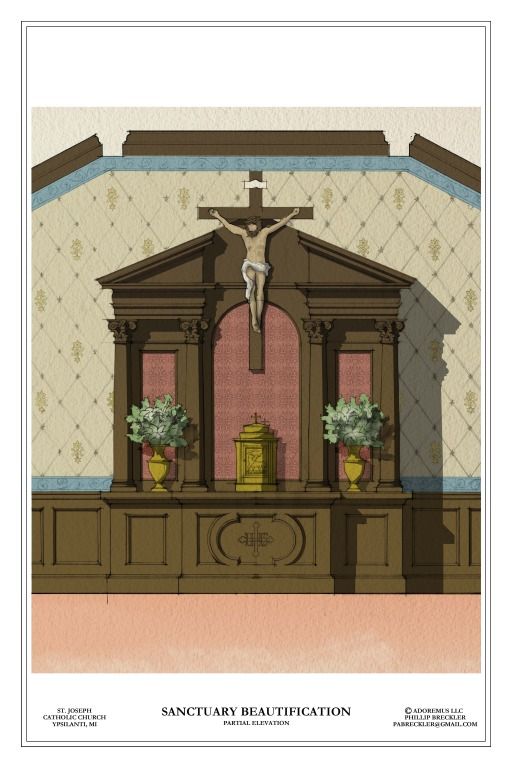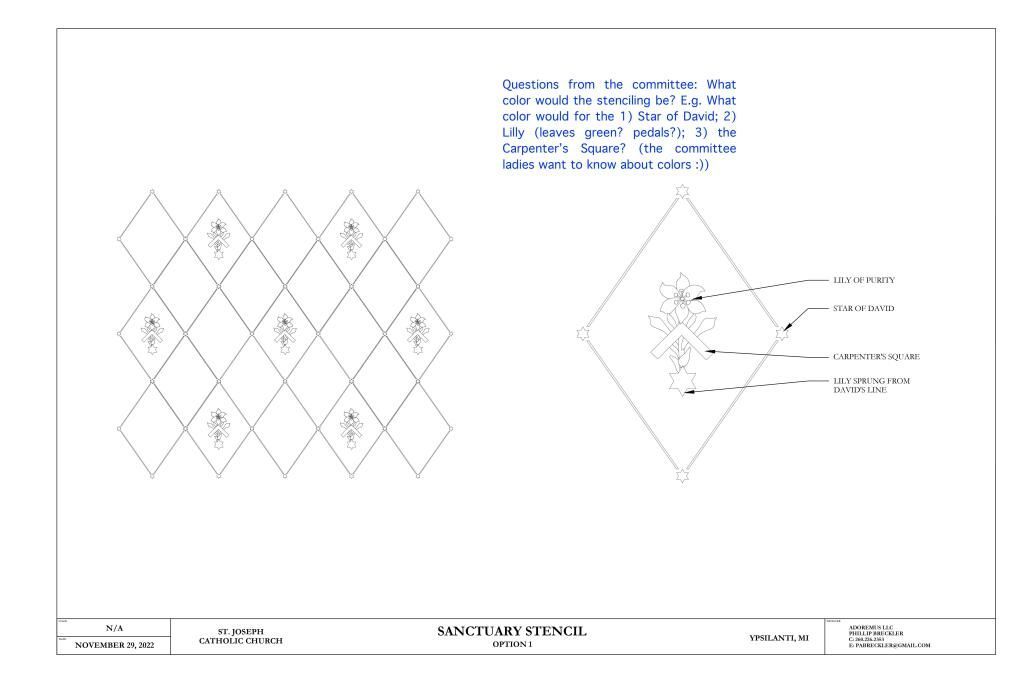We thank God that we have a beautiful church that has served us (and those before us) very well. Many people have met Jesus in worship in the sacrifice of the Mass at St. Joseph since our church was built in 1967.
But at the same time parishioners have asked if we could invest in our worship space to manifest the church more clearly as the “house of God and gate of Heaven.” As you know, our parish exists to form disciples of Jesus. We seek to follow Jesus so closely that the “dust of His feet” covers our faces and our lives (we order our lives around Him). And at the heart discipleship stands worship: we worship our Triune God! But as human beings we worship God through our senses. And just like singing, reading, and preaching affect our worship, so do art and architecture. For this reason, the Second Vatican Council asked that church art and architecture be composed of “signs and symbols of heavenly realities” (SC 122) to show that Heaven touches earth in our worship at Mass. Similarly, Saint John Paul II wrote that Christian art and architecture can become a “in a sense, a sacrament” that reveal God’s presence on earth. I am grateful to the work of the “renovation committee” and excited about the proposed plan for the church. I pray that we may meet God in the Mass, so that, transformed by Him, we may become more and more “salt” and “light” for our community. Fr. Pieter van Rooyen
If you feel called to donate toward this project, you can write a check with “Renovation” on the memo line or click on the donate button below.



